Syringes and needles come in a variety of sizes, and are used in a multitude of applications. Many are needed as diabetic supplies or for enteral feeding. Other types of syringes and needles include insulin syringes, tuberculin syringes, hypodermic needles, and pen needles.
Rehabmart is proud to carry a wide assortment of superior quality syringes and needles from well-known and credentialed medical manufacturers, such as McKesson Medical-Surgical, Independence Medical, and Medline.
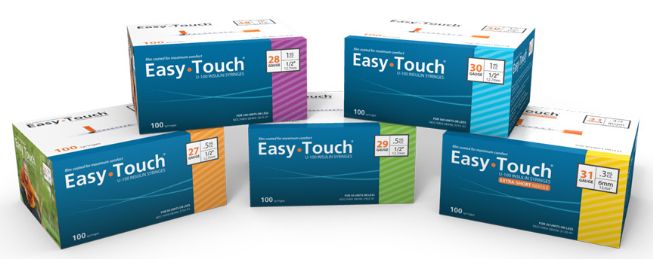
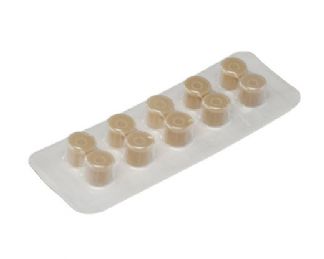








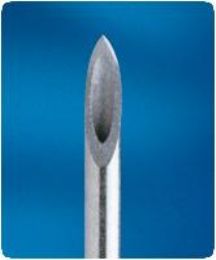
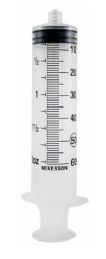
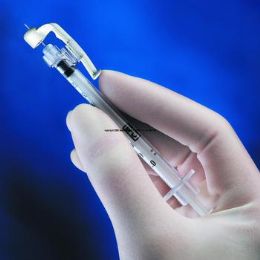
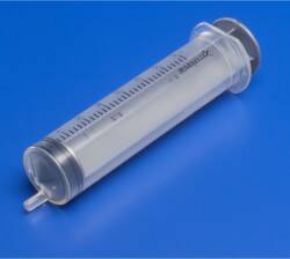
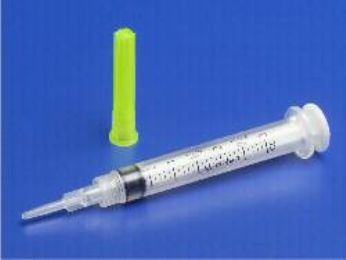
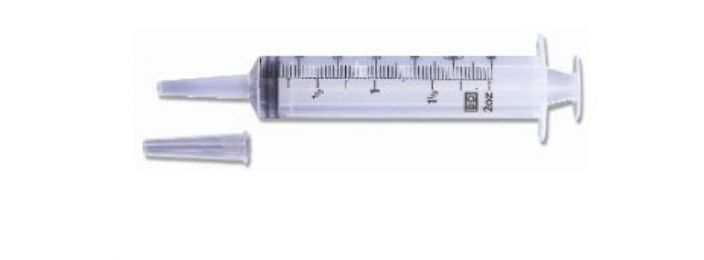
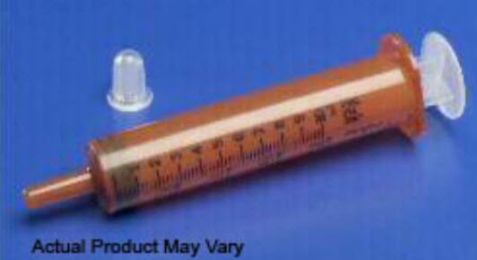

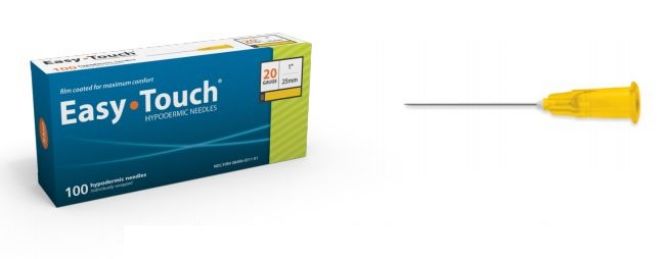

What is an Insulin Syringe?
An insulin syringe is a syringe with a small needle made particularly for those with diabetes to self-administer insulin. It is configured to inject the medication into the subcutaneous tissue, the desired location for an insulin injection. This is because the fat cells allow the medication to be absorbed slowly and constantly for a longer lasting effect.
The syringe typically has a plunger, barrel, and needle. The plunger is the part which is pulled back to draw liquid into the syringe, and is compressed to push the liquid out of it. It fits tightly within the barrel, and has a plastic disc on one end and a rubber tip on the other. The barrel is the hollow chamber that holds the insulin and has markings measured in International Units (IU). Most insulin syringes have 100 unit barrels, and a lo-dose insulin syringe may have a 50 unit barrel. The needle is very short and thin for a subcutaneous injection. The pain connected with this type of injection is usually minimal.
Injection sites are normally located on the thigh, upper arm, or abdomen. The area should be cleaned with an alcohol wipe, using a circular motion and from inside to outside of the chosen area. Hold the syringe like a dart in one hand and firmly pinch the skin with the other hand. Quickly insert the needle at a 90 degree angle and slowly press the plunger to inject the medication. Syringes and needles should be disposed of properly. For safety reasons, used needles should be discarded in an appropriately labeled sharps container.
What is a Tuberculin Syringe?
A tuberculin syringe is a small syringe with a fine needle that holds up to one-half to one cubic centimeter (CC) of fluid. It administers medication under the skin and performs tuberculosis tests called PPD. Different types of tuberculin needles may come permanently connected to the syringe, or they may be separate and need to be put together. The syringe is marked in increments of 0.01 cc, and the needles are often 26 to 27 gauge and 1/2 to 5/8 inch in length.
A tuberculin syringe and needle is different than an insulin syringe and needle. An insulin syringe cannot be substituted for a tuberculin (TB) syringe because the units of measure are different, and a TB syringe needle is shorter than an insulin needle. The reason is that the TB antigen solution is administered intradermally, between the skin layers, as compared to the longer needle of an insulin syringe. The usage procedure is similar for the two types and a sterile technique is essential.
What is a Hypodermic Syringe?
A hypodermic syringe is a small syringe that can be fitted to a hollow hypodermic needle to perform an injection to, or an extraction from the body. Most are made of plastic, but they can also be made of glass. One primary application of a hypodermic syringe is to inject a substance, such as a vaccination or medication. An injection may be made directly into the body or through an intravenous line which then carries it to the bloodstream. The method of administration depends on the medication.
A blood sample can also be taken by using a hypodermic syringe. When the blood is drawn, it can go into the syringe, or into an attached test tube which performs necessary diagnostic tests on the blood. In medical settings, a hypodermic syringe is generally disposable and only used once and then thrown away. This is to minimize the risk of transmitting diseases between people.
What are Pen Needles?
A pen needle is the disposable element for an injection pen which dispenses medication. These supplies are commonly employed by those who need regular injections, such as those with diabetes who take insulin. The pen can be operated over and over again, while the needle is changed for each use for a smooth performance. There are many types of pens and accessory needles available; therefore, select the correct type for individual needs.
This device includes a small needle on a mounting cap that can be clipped or twisted into the pen. To prevent a needle stick injury, a shield covers the needle until it is ready so it will stay sterile. A cartridge of medication is inserted into the pen instead of having to draw an injection out of a vial. When ready to take the medication, uncap the pen and perform the injection. Some pens have a retractable design to withdraw the needle after its application to also prevent injuries.
A pen needle is classified by its gauge and length, just like other needles. Some medications require a larger gauge because they are thicker and cannot move easily through a small needle. The smaller the needle, the more comfortable the injection, therefore a balance between the two should be considered when selecting an appropriate pen needle. Length is also a consideration since some injection sites may need a longer needle for effective administration of a medication.
Individuals are usually advised to utilize a pen needle only once for many reasons. One reason is for comfort. A needle dulls each time and can become more uncomfortable to puncture the skin with every use. Also, many uses can increase the risk of an infection. Disposing of a needle right after its application can protect others by limiting the chances of a needle stick injury.
Hulet Smith, OT
Rehabmart Co-Founder & CEO
lb